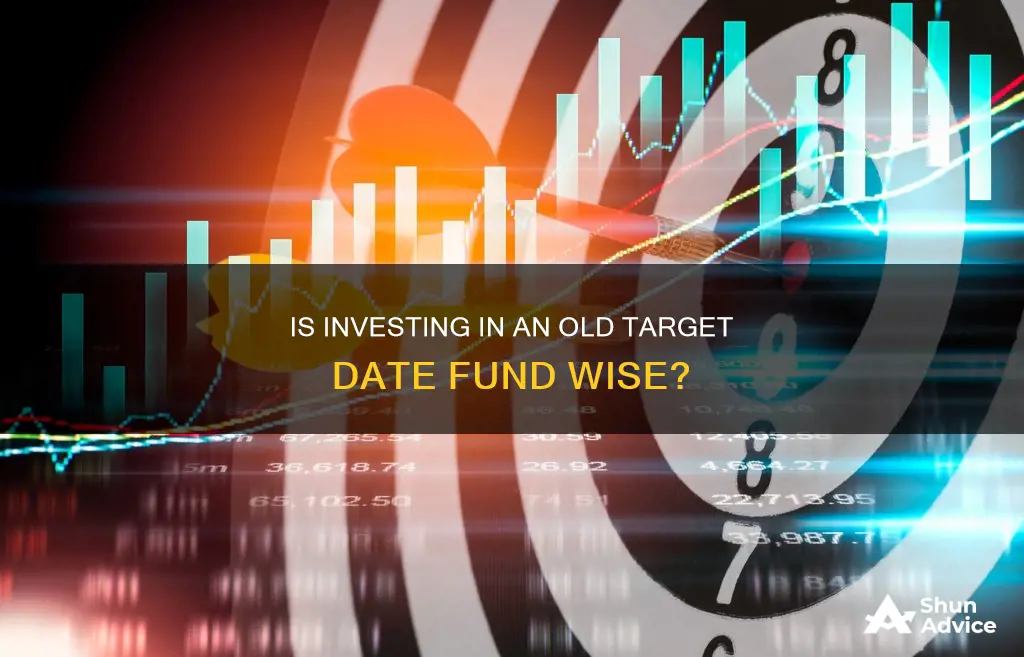
Target-date funds, also known as life-cycle funds, are a popular choice for investors saving for retirement. They are designed to reduce investment risk and are based on when you plan to retire. You pick a fund with a target year closest to your anticipated retirement year, and the fund promises to rebalance and shift the risk profile of its investments as you approach that date. For example, if you are 40 years old and plan to retire at 65, you would choose a target date fund with a target date of around 2045-2050.
Target-date funds are a set it and forget it option, removing the need for investors to decide on a mix of assets and rebalance those investments over time. They are designed to age with you, automatically rebalancing your portfolio from growth investments toward more conservative ones as retirement nears. However, they are not risk-free and do not provide guaranteed income in retirement.
Target-date funds are typically structured as mutual funds and can be a great investment option for those not interested in constantly reconsidering and adjusting their investment choices.
| Characteristics | Values |
|---|---|
| Purpose | Retirement savings |
| Type | Mutual fund |
| Risk | High-risk to low-risk over time |
| Investment choices | Aggressive to conservative over time |
| Management | Automatic |
| Enrollment | Easy |
| Diversification | Full |
| Fees | High |
| Returns | Not guaranteed |
| Flexibility | Low |
What You'll Learn

Target-date funds are a set it and forget it option
Target-date funds are a "set it and forget it" option for investors, allowing them to remove the hassle of deciding on a mix of assets and rebalancing those investments over time. They are designed to strike a balance between the risk necessary to build wealth and safer investments to protect that wealth as the investor ages.
Target-date funds are often chosen by those who can estimate their retirement age and year. The funds are named transparently, with the target year included, such as Fidelity Freedom 2050 for those retiring in 2050. The funds are usually in five-year increments, so an investor planning to retire in 2047, for example, would choose the fund named 2050.
The funds are designed to age with the investor, automatically rebalancing their portfolio from growth investments towards more conservative ones as retirement nears. In the early years, the funds are generally set for growth, with a larger slice of the portfolio in stocks. As the retirement year approaches, the fund shifts towards more bonds, money market accounts, and other lower-risk investments. This shift in asset allocation is called a glide path.
The appeal of target-date funds lies in their simplicity. They provide an instant, diversified portfolio that is rebalanced automatically. This convenience is why target-date funds are so popular, with 64% of retirement contributions invested in them in 2023, according to Vanguard. They are also a default option for many employer-sponsored 401(k) plans.
While target-date funds are a "set it and forget it" option, investors should still monitor the fund's performance to ensure it meets their needs and risk tolerance over time.
Index Funds: Invest Now or Later?
You may want to see also

They automatically rebalance your portfolio
Target-date funds are designed to automatically rebalance your portfolio as you age, shifting from growth investments to more conservative ones as you near retirement. This is known as the fund's "glide path".
Early in your working life, a target-date fund is usually set for growth, with a larger slice of your portfolio in stocks rather than fixed-income investments like bonds, which are safer but provide smaller returns. As the target retirement year approaches, the fund gradually shifts towards more bonds, cash, cash equivalents, money market accounts, and other lower-risk investments. This shift across asset classes is designed to reduce investment risk over time.
For example, a fund may start with a mix of 90% domestic and global equity funds, but by the time of retirement, equity funds may make up only 30% of the total investment, with the remaining 70% consisting of fixed-income or cash equivalent investments.
The "glide path" of a target-date fund can vary depending on whether it is a "to" fund or a "through" fund. A "to retirement" fund will reach its most conservative asset allocation on the target retirement date, and after that date, the allocation will not change. On the other hand, a "through retirement" fund will continue to rebalance and gradually shift towards more conservative investments even after the target retirement date.
Target-date funds provide a "set it and forget it" approach to portfolio management, automatically updating your asset allocation over the years. However, experts advise reviewing your fund's performance at least once a year to ensure it still aligns with your investment goals and risk tolerance.
Money Market Funds: Where Are Your Investments Going?
You may want to see also

They are a default option for many employer-sponsored 401(k) plans
Target-date funds have become a default option for many employer-sponsored 401(k) plans. The Pension Protection Act of 2006 helped employers develop retirement plans and set up automatic enrolment, making target-date funds an easy option for retirement plans with their low fees and diversified portfolios.
Target-date funds are a "set it and forget it" retirement savings option that removes two headaches for investors: deciding on a mix of assets and rebalancing those investments over time. They are designed to age with you by automatically rebalancing your portfolio from growth investments toward more conservative ones as retirement nears.
Target-date funds, also known as life-cycle funds or target-retirement funds, aim to continually strike the right balance between the risk necessary to build wealth and safer bets to protect a growing nest egg. The fund automatically rebalances your portfolio with the right mix of stocks, bonds and money market accounts as you age. These are mutual funds that purchase from other mutual funds (known in the business as a "fund of funds") to build a diverse portfolio. While you set and forget, the fund updates your asset allocation through the years.
Early in your working life, a target-date fund is generally set for growth by having a much larger slice of your portfolio in stocks rather than fixed-income investments like bonds, which are safer but provide smaller returns. As your retirement year approaches, the fund gradually shifts toward more bonds, money market accounts and other lower-risk investments.
Your retirement year is the "target date" of most of these funds, and the funds are conveniently named to correspond with your planned retirement year. For example, if you are 40 years old and plan to work until you are 65, you would choose the provider with a fund named with the year nearest your planned retirement date.
The chief appeal of target-date funds is their simplicity. They are a one-stop-shop for investors, putting together a diverse range of ingredients that suit the individual's needs. Their convenience is a big reason many Americans already own target-date funds, although many may not know it.
Another advantage of target-date funds is that they keep investors from being too reactive to the market's twists and turns, which often results in buying high and selling low.
Index Funds vs. IRAs: Where Should You Invest?
You may want to see also

Target-date funds are not risk-free
No Guaranteed Income
Target-date funds do not guarantee a specific income in retirement. The value of the fund can decrease if the stocks and bonds owned by the fund drop in value. Therefore, there is a risk of losing money, even when the target date has been reached. This risk is inherent in any investment, and target-date funds are no exception.
Varying Strategies and Allocations
Different target-date funds with identical target dates may have distinct investment strategies and asset allocations. These variations can significantly impact the level of risk associated with each fund and their value at any given time, including during and after retirement. As a result, investors need to carefully assess and monitor the specific fund they choose.
Glide Path Variability
The "glide path" refers to how a target-date fund shifts its asset allocation over time, moving from riskier investments to more conservative ones. However, glide paths can vary significantly between funds, and the level of investment risk can be difficult to predict, even for funds with similar target dates. This variability means that the actual risk exposure of a target-date fund may differ from what an investor expects.
Limited Investment Choices
Target-date funds typically offer a one-size-fits-all strategy, limiting the investor's ability to make active choices about their investments. While this may be advantageous for those who want a hands-off approach, it can also mean that the fund's strategy may not align perfectly with an investor's specific risk tolerance and financial goals.
Potential for Being Too Conservative
Some research suggests that target-date funds may become too conservative too early. As investors approach retirement, these funds tend to shift towards more conservative investments to preserve wealth. However, this shift could result in lower returns than desired or needed to meet retirement goals. Therefore, investors need to assess whether the fund's level of conservatism aligns with their risk tolerance and financial objectives.
Tracking Mutual Fund Investments: Strategies for Success
You may want to see also

They are not guaranteed to generate a certain amount of income
Target-date funds are not guaranteed to generate a certain amount of income. As with any investment, they are subject to risk and underperformance. While they aim to reduce risk over time, they are not risk-free. Target-date funds do not provide guaranteed income in retirement and can lose money if the stocks and bonds owned by the fund drop in value.
The funds are designed to invest heavily in riskier growth stocks in the early years, with the aim of racking up gains while the investor has plenty of time to recover from any short-term losses. However, there are no guarantees that this will be the case. The stocks and bonds owned by the fund could drop in value, resulting in losses for the investor.
As target-date funds approach their target date, they shift towards more conservative investment choices to consolidate gains and avoid untimely losses. This is known as the glide path. However, even after reaching the target date, there is no guarantee that the fund will generate a certain level of income. The fund's performance will depend on various factors, including the specific investments held by the fund and the overall market conditions.
Additionally, it is important to note that different target-date funds have different investment strategies and asset allocations, which can affect their performance. Even funds with identical target dates may have very different underlying investments, which can impact their risk level and potential returns. Therefore, investors should carefully consider the specific investments and strategies of a target-date fund before deciding to invest.
While target-date funds can provide a convenient and hands-off approach to retirement savings, they do not guarantee a certain level of income. Investors should be aware of the potential risks and returns associated with these funds and consider their own financial goals and risk tolerance when making investment decisions.
A Beginner's Guide to Mutual Fund Investing with Small Capital
You may want to see also
Frequently asked questions
Target-date funds are a "set it and forget it" investment option that removes the headache of deciding on a mix of assets and rebalancing those investments over time. They are designed to age with you by automatically rebalancing your portfolio from growth investments toward more conservative ones as retirement nears. They are also easy to enrol in and provide full diversification.
Target-date funds limit investment choices and decisions, and usually have a one-size-fits-all strategy. They may be too conservative near the retirement date and investors are not actively involved in investment choices. They can also be relatively expensive in terms of fees and there are no guarantees of returns.
Choose a target-date fund with a target year closest to the year you anticipate retiring. Compare the costs of target-date funds among companies and funds and consider the fund's investment strategy and how it fits with your risk tolerance.







